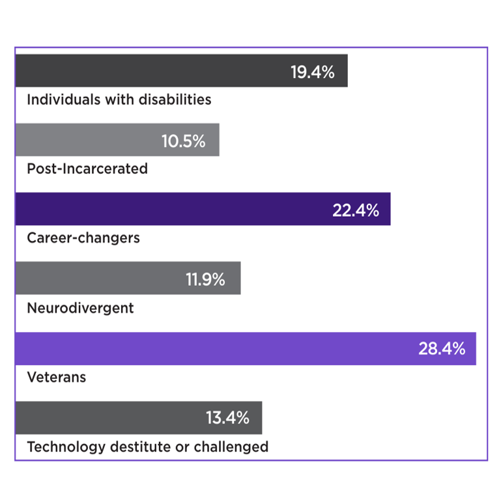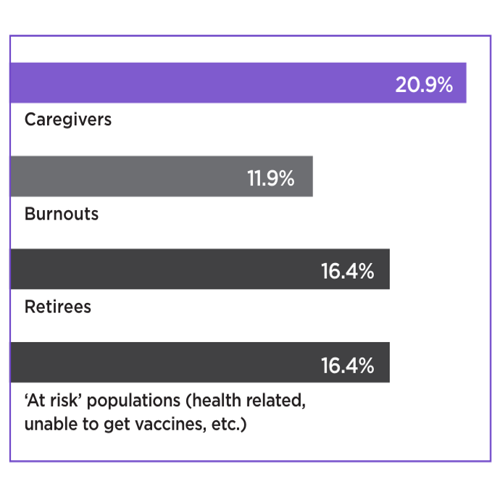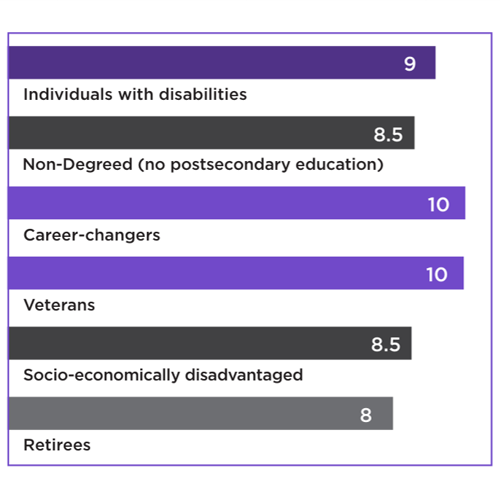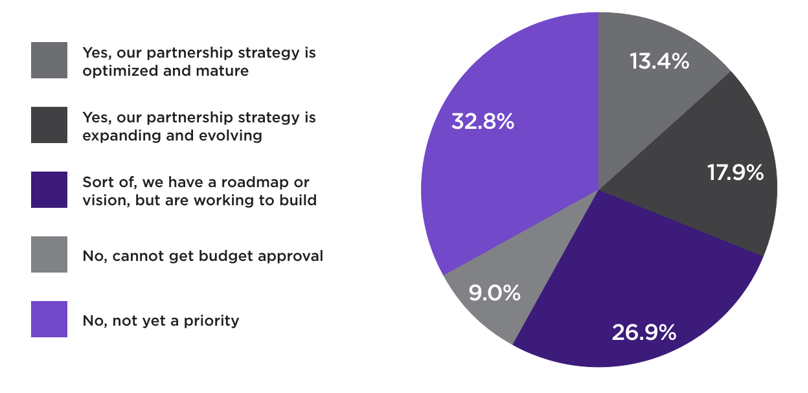Introduction
When it comes to talent management, the COVID-19 pandemic has created several challenges for employers—primarily a combination of the “Great Resignation” and a major shift to remote work. Simply, it has been an atypical time for HR leadership.
According to the U.S. Chamber of Commerce, for example, employers are facing unprecedented challenges trying to find enough workers to fill open jobs. The Chamber notes that the latest data shows 11.3 million job openings in the U.S.—but only 6 million unemployed workers.
While reasons for the ongoing talent shortage vary, one factor in the pandemic-fueled scarcity is older workers are choosing to retire earlier than planned. According to research from the St. Louis Federal Reserve, more than three million baby boomers chose premature retirement in the past two years or so. Another employee group driving the current talent shortage includes working mothers who left jobs to care for kids at home and haven’t returned to the workforce, or workers who simply felt burned out, left their jobs and took time during the pandemic to re-evaluate their career directions.
Yet, even with those factors and more in play, the ongoing talent scarcity chaos has an upside: it has created opportunities for employers to think outside the box when it comes to attracting and hiring candidates from talent communities that have been fairly ignored in the past.
What can employers do to attract and land the talent needed to help close the talent scarcity gap? Based on a recent survey from Human Resource Executive commissioned by Cielo, a good place to start would be seeking out job candidates from several groups who have historically been underrepresented or, in some cases, hard to identify. Those talent communities include a range of potential employees, from the “post incarcerated” to “technologically destitute or challenged,” “individuals with disabilities” to the “neurodivergent.” (Neurodivergent is a broad term used when an individual’s brain processes, learns and/or behaves differently from what is considered “typical.”).
Key takeaways
Among the survey findings, a consistent theme is that in many cases members of those historically underrepresented talent communities have capable skillsets to meet many employer needs.
At the same time, approaches that could address this challenge – for instance, using a new learning paradigm or doing a comprehensive job description review, among others—could shake loose an understanding of what employers actually need from talent, versus what they’ve traditionally sourced for.
Chapter 1
No surprises on groups employees favor
The icebreaker first question in the Cielo/HRE survey asked respondents to rank a group of specific talent communities on a scale of 1 to 5, indicating how mature (or not) your hiring & attraction strategies are, with 5 being the most mature, 1 being the least.
Unsurprisingly, veterans, at 28%, and career changers, at 22%, led the pack when it comes to high maturity levels for employers.
Meanwhile, groups such as the post-incarcerated, at 10.45%, and neurodivergent, at 11.9%, did not fare well at all.
In fact, on the least mature side of the survey, those groups scored the highest at 44.7% and 31.3% respectively.

Another underrepresented group in question #1, individuals who are “technology destitute or challenged,” scored just 13.4% on the highest maturity level. Essentially, that means those individuals often are not comfortable applying online, do not have high-speed internet or even any online access at home. Also, AI and technology in general may actually be unintentionally excluding this group from the hiring process. If so, employers are likely missing out on a group of people who could be outstanding employees.
Clearly, employers need to begin thinking about how they can connect with those hard-to-reach talent communities within the overall candidate pool. To do so will take new approaches that focus on the “knockouts” (those who are almost immediately eliminated for consideration mainly due to technology accessibility issues), and adopt improved accessibility strategies that help employers learn where and how to re-engage with them.
Chapter 2
Two questions, strong points
Question #2, which ranked talent communities who have excluded themselves based on needs and expectations on a scale of 1-5, indicates how mature (or not) those hiring & attraction strategies are. Those listed as “burnouts” scored the lowest maturity ranking by employers. One difficulty for employers is defining who is burned out and what took them out of the workforce. But the critical question is how employers can get them back, regardless of what drove them to say, “I quit!”

Another notable survey question, #4, gauged how employers are prioritizing their talent needs. Specifically, the survey asked participants to select and rank the top four communities most likely to be a priority for a proactive talent attraction strategy in the next 12 to 18 months. Here, veterans and career changers ranked the highest.

Chapter 3
Job descriptions matter
Cielo Executive Vice President Tara Cassady says the survey results illustrate why organizations need to understand what their job descriptions actually ask of individuals in those roles. Employers need to transform outdated job descriptions into compelling invitations to candidates, removing any unnecessary requirements for the position. Also, outdated background check requirements also may no longer be necessary.
If an employer does that upfront work, it creates an opportunity to attract underrepresented workers.
Cielo, in fact, recently asked clients when the last time was they reviewed job descriptions. “Most didn’t recall the last time; some said it could be anywhere from five to seven years,” said Cassady. With that, some Cielo clients currently are reviewing job descriptions to include updated terminology that increases diversity across the entire range of workforce segments.
Chapter 4
Partnerships can mean positive outcomes
The survey also revealed some interesting data in regard to implementing an effective diversity strategy. Question #6 reported that a total of about 31% of participating employers have a sound partnership plan in place to help them understand how to attract more diverse job candidates. Of course, that means that 69% of respondents don’t.
Employers should make that move because they’re no longer able to just say, “We need talent and we’re going to choose whomever we want.” Potential hires have now put organizations in a position where the latter must establish strategies and steps to become an employer of choice.
Cielo Senior Diversity Equity & Inclusion (DEI) Program Lead Jacquese Brown believes one major way to get there is through partnerships. “Whether it’s leveraging partnerships within the organizations like ERGs (employee resource groups) for referral initiatives or establishing new external collegiate or local community partners, reciprocated diversity relationships work," Brown said.
Chapter 5
Underrepresented groups slip through the cracks
The survey also shows that in some cases, employers have gotten comfortable consistently sourcing from within the same talent pools. While it’s unlikely that underrepresented groups have been intentionally untapped, satisfaction with longstanding recruiting strategies may have overshadowed efforts to think outside the box in terms of talent sources.
Today, employers are at a point in time where they must invest more in reaching out to excluded candidate groups. It’s no longer enough to make empty promises of hiring individuals with disabilities, for instance. Organizations must take action to get their workplace ready for such an initiative. The same is true of reaching out to individuals who left their jobs due to burnout, or because they believe they don’t have the technology skills to be valuable employees. Ask this question: “How as an employer can I start not only thinking about my strategies to attract those candidates, but also best engage them once they are in the fold?”
It’s clearly an employee market right now, and millennials across the board say they are unlikely to work for an organization that is not diverse and inclusive. These millennials are extremely selective about their employer of choice, based on how they engage with various audiences. If they don’t see that happening, those employers will find themselves no longer an option for that specific, and highly valued, talent demographic.

Chapter 6
Training programs can bear fruit
Another strategy to hire underrepresented talent communities involves taking a fresh look at sponsorships and/or training programs.
For example, Cielo has seen training programs grow significantly in the healthcare market. If an applicant has even some basic healthcare experience and a desire to learn, employers can train them. For example, having them shadow and support existing employees to learn necessary skills is a smart way to address immediate talent needs.
Training is an area that Cassady believes is going to be a big win for companies as they try to tap into these new talent audiences. “Maybe it’s not on an applicant’s resume or application, but if they have some of those foundational skillsets, the missing pieces can be added via training,” she said.
Chapter 7
The talent crunch is here for the long haul
At Cielo, clients often say certain jobs can’t be filled fast enough because the talent just isn’t in the marketplace. One reason may be because internal talent leaders are not thinking about how the workforce has changed. Accordingly, educating hiring leaders is critical to establishing what solutions those leaders should look at to increase the hiring rate by connecting with underrepresented talent communities.
“This has been, in fact, one of the leading areas where Cielo has experienced demand: how to train those hiring managers and leaders to talk to audiences that they have not traditionally spoken to,” Brown explained.
“While they seem open to the idea, we have seen a desire to learn more and to be better versed in dialogue and successful engagement with underrepresented talent communities,” Brown added. “That’s why, for example, we’ve recently created a clear training strategy to help employers engage with these specific talent pools.”
On the flip side, there seems to be a desire to learn and understand more, because employers do want to approach these audiences appropriately, and increased diversity hiring has moved from “nice-to-have” to mission critical when it comes to the current talent crunch.
Conclusion
It’s clear why it’s important to connect with the underrepresented talent communities mentioned in this survey. A critical response to the challenging hiring market – today and in the future – means creating unique, tailored and effective strategies to engage and earn the trust of these important workforce segments.
Ultimately, many employers today are likely not currently investing enough time and/or resources to fully maximize finding and hiring people from talent communities that have been historically and systematically excluded, or those who have excluded themselves based on needs and expectations.
Organizations that are able to stratify their diversity, equity and inclusion (DEI) talent acquisition philosophy and approach to deliver smart solutions for recruiting and hiring these talent communities today and in the long-term will be employers who win.
About the experts

Senior DEI Program Lead, Cielo
LinkedIn connect
Chief Revenue Officer, Cielo
As Chief Revenue Officer, Tara oversees the business initiatives to drive both short- and long-term strategies to meet Cielo’s key objectives.
LinkedIn connect







